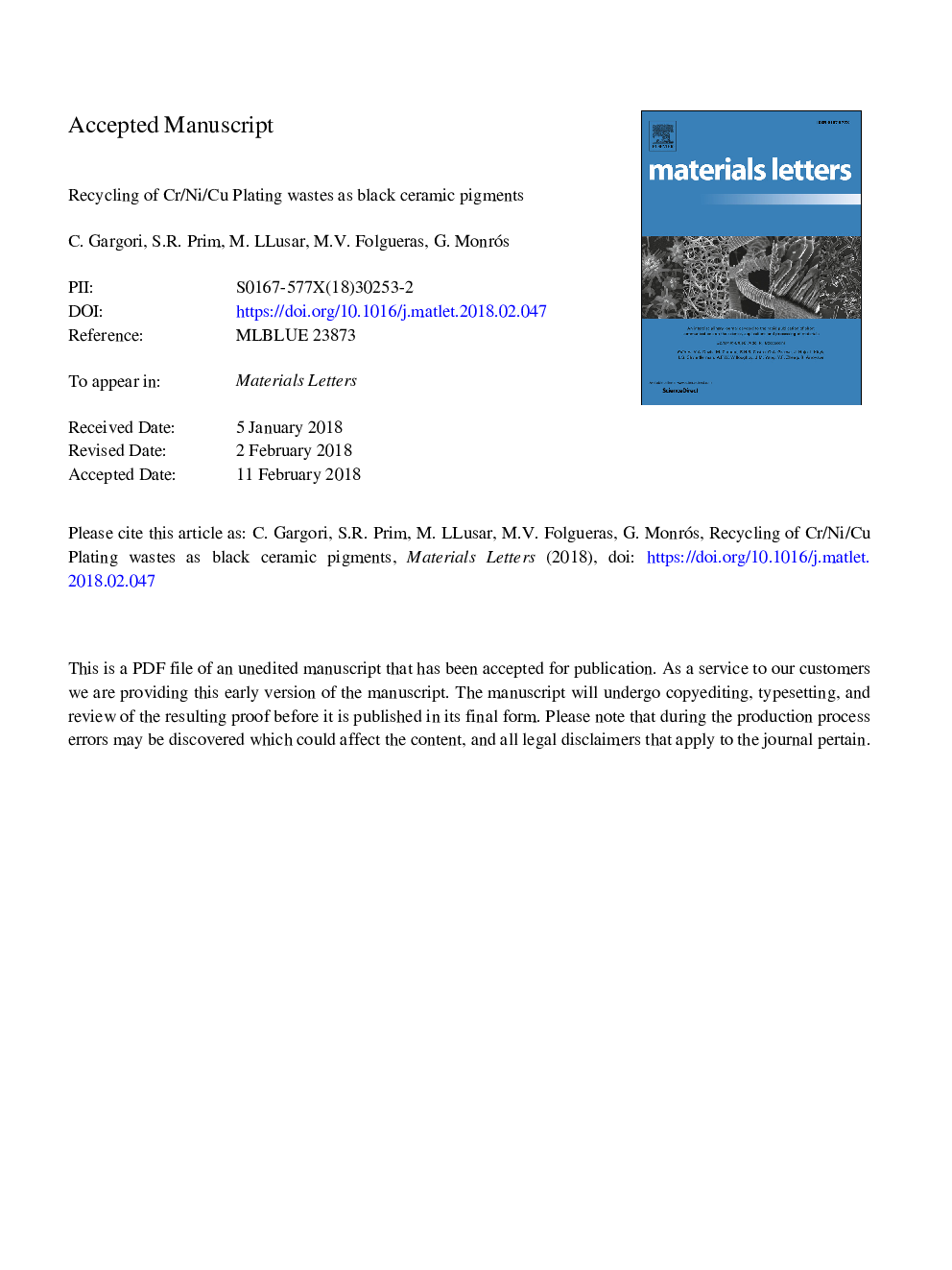| Article ID | Journal | Published Year | Pages | File Type |
|---|---|---|---|---|
| 8014181 | Materials Letters | 2018 | 10 Pages |
Abstract
The non-ferrous metal industry, such as Cr/Ni/Cu plating, produces acid sludge which is usually neutralized with lime slurry in batch processes, and the resulting waste is dewatered by vacuum filtration or filter-pressing. Dewatered sludge contains calcium sulphate (CaSO4) coming from the neutralization process, as well as transition metals (Cr, Ni and Cu), oil, grease and suspended solids. In this communication, two residual sludges from Cr/Ni/Cu plating have been dried (110â¯Â°C) and fired (1100â¯Â°C), and both dried (gray coloured) and fired powders (black coloured) have been characterized by DTA-TG, XRD and SEM-EDX techniques. XRD shows only quartz crystallization in dried samples, while NiCr2O4 chromite spinel and NiO periclase crystallize in fired powders, along with CaSO4 anhydrite and CaSiO3 wollastonite. The powders have been introduced as ceramic pigments into three different conventional glazes: a) a lead bisilicate (PbO.2SiO2) double fire frit (1000â¯Â°C), b) a double fire frit with low lead content (1000â¯Â°C), and c) a double fire frit without lead (1050â¯Â°C). Glazed samples were characterized by UV-Vis-NIR (diffuse reflectance) and CIELâaâbâ (color parameters). Dried powders induce glaze defects (pin-holing and crawling), but fired powders did not show these faults exhibiting more intense (higher Lâ) and yellowish (higher bâ) black colors than the standard spinel.
Related Topics
Physical Sciences and Engineering
Materials Science
Nanotechnology
Authors
C. Gargori, S.R. Prim, M. LLusar, M.V. Folgueras, G. Monrós,
